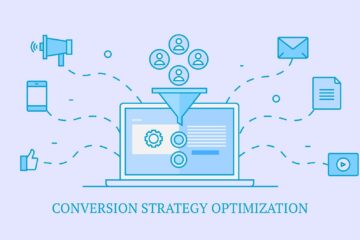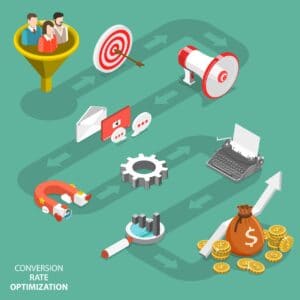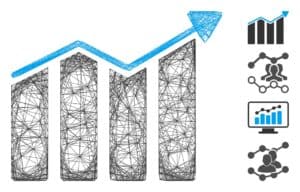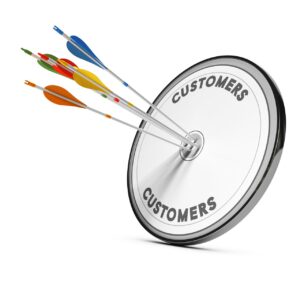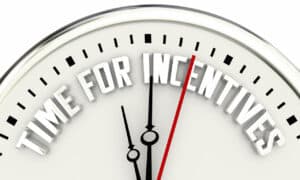In today’s digital age, social selling has emerged as a powerful strategy for field sales professionals to connect with potential customers, establish rapport, and drive sales.
As technology advances and consumer behavior evolves, leveraging social media platforms has become imperative for sales teams aiming to stay ahead of the curve.
This comprehensive guide explores the impact and power of social selling in field sales, providing valuable insights and strategies to help field sales reps, leaders, and managers maximize their sales potential.
Understanding the Evolution of Social Selling
Social selling has changed the sales landscape by utilizing the power of social media to connect with the target audience. By leveraging social media’s impact on consumer behavior, sales teams can effectively drive sales success.
The rise of social networking platforms has transformed consumer-brand interactions and purchasing decisions.
Social media is now an essential part of people’s daily lives, shaping their preferences and providing sales professionals with opportunities to engage their target audience.
But what makes social media such a potent tool for influencing consumer behavior? Let’s dive in.
Social Proof
Social networking platforms allow users to share their experiences, opinions, and recommendations. Consumers often turn to these platforms to gather insights and seek recommendations from their peers before making a purchasing decision.
By leveraging social proof, sales professionals can position their products or services as trustworthy and desirable.
Personalized Targeting
Social media platforms collect vast amounts of data about their users, from demographics to interests and behaviors.
This wealth of data enables sales professionals to precisely target their ideal customers, delivering tailored messages and offers that resonate with their needs and preferences.
Authentic Engagement
Social media platforms facilitate direct and authentic interactions between brands and consumers.
Sales professionals can engage in conversations, answer questions, and address concerns in real time, fostering a sense of trust and building meaningful relationships with potential customers.
The Powerhouse Platforms for Social Selling
To fully utilize social selling, it’s important to understand the advantages of different platforms.
1. LinkedIn: The Professional Networking Powerhouse
LinkedIn is a valuable resource for field sales professionals. Optimize your profile to make a strong impression. Ensure your profile is complete, professional, and showcases your expertise. Craft a compelling headline and detailed summary.
Building strategic connections is essential on LinkedIn. Connect with professionals in your industry, personalize connection requests, and engage regularly.
Share valuable content and establish thought leadership through articles, industry insights, and group participation.
2. Facebook: Establishing Personal Connections
Facebook allows personal connections with your target audience. Develop a strong brand presence with a professional business page.
Engage with your audience, respond to comments and messages, and join relevant groups. Leverage Facebook Ads for wider reach and targeted advertising.
3. Twitter: Real-time Interaction and Thought Leadership
Engage in conversations and establish thought leadership on Twitter. Follow industry influencers, share valuable content, and participate in Twitter chats.
Stay updated with trends and news, build relationships, and attract potential customers.
4. Instagram: Visual Storytelling and Brand Building
Instagram offers a platform for visual storytelling and brand building. Create high-quality visuals, showcase products, and use engaging captions.
Maintain a cohesive aesthetic, engage with your audience, and foster a sense of community.
5. TikTok: Creative and Engaging Content
TikTok is a platform for creative and engaging content. Create short videos showcasing your products, participate in trends and challenges, and collaborate with influencers. Engage with your audience, respond to comments, and generate buzz around your brand.
By simplifying your approach across these platforms, you can maximize your social selling efforts. Adapt your strategies to each platform’s unique features and engage with your audience effectively. Embrace social selling on these platforms and elevate your sales approach.
The Power of Social Listening
Social listening is valuable for monitoring and analyzing conversations and mentions of your brand or industry on social media. By actively listening to your audience, sales professionals can gain insights, identify opportunities, and customize their sales approach.
Keep an eye on mentions of your brand, products, and competitors on social media. Analyze sentiment to understand customer perception and address concerns to improve your brand reputation.
Analyze conversations related to your field to spot common challenges, emerging trends, and evolving customer needs. Refine your sales strategies and align offerings accordingly to stay ahead.
Join industry-specific groups and forums to contribute insights and showcase expertise. Build relationships, establish credibility, and stay updated with industry developments to connect with prospects and find leads.
By monitoring brand mentions, identifying trends and pain points, and engaging in discussions, field sales professionals can leverage social listening to enhance sales strategies and connect with potential customers.
Building an Impactful Social Media Presence
Having a strong social media presence is essential for successful social selling. Your social media profiles reflect your brand and expertise, leaving a lasting impression on potential customers.
Follow these strategies to build a professional and impactful social media presence.
- Consistent Branding: Maintain consistent branding across all your social media profiles, including the same logo, color scheme, and tone of voice. This consistency reinforces your brand identity and fosters recognition.
- Optimize Profiles: Optimize your profiles by providing a compelling bio or summary, incorporating relevant keywords, and adding links to your website or other social networking channels.
- Engaging Content Mix: Share a variety of content, including informative articles, industry news, visuals, and user-generated content. Strike a balance between promotional and educational content to provide value to your audience.
- Thought Leadership: Establish yourself as a thought leader in your industry by sharing unique insights, original research, and innovative ideas. Compose articles or blog posts that highlight your expertise and share them on your social media profiles.
Social Selling Strategies for Field Sales Professionals
To excel in social selling, a well-defined strategy is crucial. Let’s explore essential strategies and techniques that field sales professionals can use to maximize their social selling efforts. By implementing these strategies, sales professionals can build relationships, provide value, and engage with prospects effectively.
1. Identify and Target Ideal Customers
To drive successful social selling campaigns, it’s important to identify and target ideal customers. Follow these steps to understand your target audience and tailor your social selling activities accordingly.
- Define Customer Profiles: Create detailed profiles that include demographics, industry, job titles, pain points, and motivations to understand their needs better.
- Identify Key Decision-Makers: Pinpoint the decision-makers within your target organizations and tailor your messages to their specific needs and pain points.
- Leverage Social Media Data: Use social media data and analytics to identify prospects that match your ideal customer profiles.
2. Build Relationships and Establish Rapport
Building relationships is at the core of social selling. Use these techniques to establish rapport, build trust, and nurture relationships with potential customers.
- Be Genuine and Authentic: Show genuine interest in your prospects and strive to build authentic connections based on trust.
- Personalize Your Interactions: Tailor your communication to each individual prospect, addressing their specific needs, pain points, and interests.
- Provide Value: Share valuable insights, resources, and solutions that address your prospects’ challenges.
- Follow Up Consistently: Demonstrate your commitment and interest in their success by following up in a timely manner.
3. Provide Value through Content Creation and Curation
Creating and curating valuable content helps sales professionals position themselves as industry experts. Use these strategies for creating compelling content.
- Understand Your Audience’s Needs: Research your target audience’s pain points and challenges to create content that resonates with them.
- Create Compelling Content: Develop high-quality content like blog posts, articles, videos, and infographics that provide actionable insights and solutions.
- Curate Relevant Content: Share valuable content from industry influencers, thought leaders, and reputable sources to diversify the insights you provide.
4. Engage with Prospects through Meaningful Interactions
Meaningful interactions are key to successful social selling. Use these techniques to engage with prospects and build relationships.
- Personalize Your Messaging: Tailor your messages to each prospect, addressing their specific needs and pain points.
- Participate in Industry Discussions: Join relevant groups and social media conversations to share insights and establish yourself as a trusted resource.
- Respond Promptly: Demonstrate your attentiveness and dedication to customer satisfaction by providing timely responses to inquiries and comments.
- Actively Listen and Show Empathy: Listen to your prospects’ concerns, ask questions, and show empathy in your responses to foster trust.
5. Leverage Social Selling Tools and Technologies
Various tools and technologies can support your social selling efforts. Consider using these tools to streamline your activities and enhance sales outcomes.
- CRM Systems: Use Customer Relationship Management (CRM) software to manage customer data and track interactions.
- Social Media Management Tools: Utilize platforms that help you schedule posts, monitor social media activity, and analyze engagement metrics.
- Content Creation Tools: Explore tools that help you create visually appealing graphics, videos, and infographics.
- Social Listening Tools: Leverage tools to monitor brand mentions, industry conversations, and customer sentiment.
6. Align Social Selling with the Sales Funnel
Integrating social selling with the sales funnel is crucial for conversions. Use these strategies to optimize conversions at each stage.
- Awareness Stage: Raise brand awareness through valuable content and engage with potential customers.
- Consideration Stage: Nurture relationships with personalized content and meaningful interactions.
- Decision Stage: Demonstrate value through compelling content and promptly respond to inquiries.

Maximizing Lead Generation and Conversion
In social selling, the main objectives are generating and converting leads.
In this section, we explore techniques for nurturing leads, effective prospecting, converting social media connections into customers, and measuring success in social selling.
A. Nurturing Leads
By building relationships and providing value throughout the buyer’s journey, you increase the likelihood of converting leads into loyal customers. Consider these strategies.
- Engage Regularly: Keep in touch with leads by providing relevant content, addressing their questions, and offering personalized solutions. Consistent communication builds trust and keeps your brand top-of-mind.
- Segment and Prioritize: Categorize leads based on engagement, interests, and buying intent. Focus on leads with high potential and build deeper relationships with them.
- Offer Exclusive Content: Provide valuable content like ebooks, whitepapers, or webinars exclusively to leads. This creates a sense of exclusivity and encourages them to move further along the sales funnel.
B. Effective Prospecting
Prospecting is key in social selling to identify and engage potential customers. Maximize your lead generation efforts with these effective prospecting techniques.
- Utilize Advanced Search: Make use of social media platforms’ search features to find prospects that match your ideal customer profiles. Refine your search based on industry, job title, and location for relevant prospects.
- Engage With Prospects’ Content: Actively interact with prospects by liking, commenting, and sharing their content. This shows interest and initiates conversations. Look for opportunities to provide value and establish rapport.
- Leverage Warm Introductions: Seek introductions to potential customers through mutual connections. Expand your network and build credibility with prospects.
C. Converting Social Media Connections into Customers
Converting social media connections into customers requires a strategic and personalized approach. Here are techniques to convert your connections into paying customers.
- Personalized Outreach: Reach out with tailored messages that address prospects’ pain points and highlight how your offerings can help. Build relationships instead of using generic sales pitches.
- Offer Special Promotions: Provide exclusive discounts or promotions to incentivize action. Create a sense of urgency and exclusivity for conversions.
- Utilize Social Proof: Share testimonials, case studies, and success stories to demonstrate the credibility and value of your offerings. Social proof builds trust and confidence.
D. Measuring and Tracking Success
Measuring and tracking social selling success is vital for optimizing strategies. Consider these key metrics and approaches.
- Engagement Metrics: Monitor likes, comments, shares, and retweets to assess content engagement. Analyze what resonates with your audience and refine your approach.
- Lead Conversion Rates: Track leads generated from social media and measure the percentage that converts into customers. Identify effective lead generation strategies and optimize your sales funnel.
- Revenue Attribution: Analyze revenue from social selling to assess its impact on overall sales performance. Evaluate the return on investment (ROI) of your social selling activities.
- Customer Feedback: Gather feedback from customers acquired through social selling to gauge satisfaction, improve your approach, and gather testimonials. Use customer feedback to enhance the customer experience.
Overcoming Challenges in Social Selling
Social selling comes with its fair share of challenges. In this section, we address common hurdles faced by field sales professionals and provide strategies to overcome them.
By understanding and proactively tackling these challenges, sales professionals can navigate the social selling landscape confidently. Consider these strategies to overcome social selling challenges.
Overcoming Resistance and Skepticism
Not all prospects are receptive to social selling and may doubt its effectiveness. To overcome resistance and skepticism.
- Educate Prospects: Showcase success stories and real-world examples to demonstrate the value and benefits of social selling. Provide data and evidence that highlight positive outcomes.
- Provide Social Proof: Share testimonials and case studies that illustrate the tangible results achieved through social selling. Show how it has helped similar businesses achieve their sales objectives.
- Personalize Your Approach: Tailor messages and interactions to address the specific concerns and objections of skeptical prospects. Show understanding of their challenges and how social selling can provide solutions.
Balancing Automation and Personalization
Automation tools are valuable for streamlining social selling, but finding the right balance is crucial. Sales professionals can:
- Use Automation Selectively: Automate repetitive tasks while maintaining personalized interactions for relationship-building. Free up time for more meaningful engagements.
- Tailor Automated Messages: Customize automated messages with personal touches, such as referencing recent interactions or content engagement. Avoid sounding robotic or generic.
Managing Time Effectively
To effectively manage time while engaging in social selling activities, consider these strategies:
- Set Specific Time Blocks: Allocate dedicated time for social selling activities while ensuring other sales tasks are not neglected. Create a schedule that allows focused efforts without impeding other essential sales activities.
- Prioritize Tasks: Identify important social selling activities that have a direct impact on lead generation and relationship-building. Prioritize those tasks to make efficient use of time.
- Leverage Scheduling Tools: Use social media scheduling tools to plan and automate content posting. This allows you to focus on engaging with prospects while maintaining a consistent social media presence.
Staying Compliant with Privacy and Data Protection Regulations
As privacy and data protection regulations tighten, sales professionals must ensure compliance when using social media platforms. Consider these strategies:
- Understand Privacy Regulations: Familiarize yourself with applicable privacy and data protection regulations in your region and industry. Stay updated on changes and guidelines that may impact your social selling activities.
- Obtain Consent: Ensure proper consent from prospects and customers before collecting and using their personal information. Follow best practices for obtaining consent, including clear opt-in options and transparent explanations of data usage.
- Secure Data Storage: Implement robust data storage and security measures to safeguard customer information. Use encryption and secure servers to protect sensitive data and comply with privacy regulations.
Final Thoughts | Social Selling for Field Sales Success
Social selling is crucial in today’s field sales landscape. By utilizing social media, sales professionals can generate leads, build relationships, and drive sales success in the digital era.
Embracing social selling and staying ahead of the game is essential for future sales achievements. As technology advances and consumer behavior changes, the influence, and effectiveness of social selling will continue to expand.
Implementing the strategies, tips, and techniques outlined in this comprehensive guide will enable field sales teams, leaders, and managers to unleash the full potential of social selling and achieve outstanding sales results.
Start your social selling journey today and revolutionize your field sales approach. Book your free Beest.app demo today!

